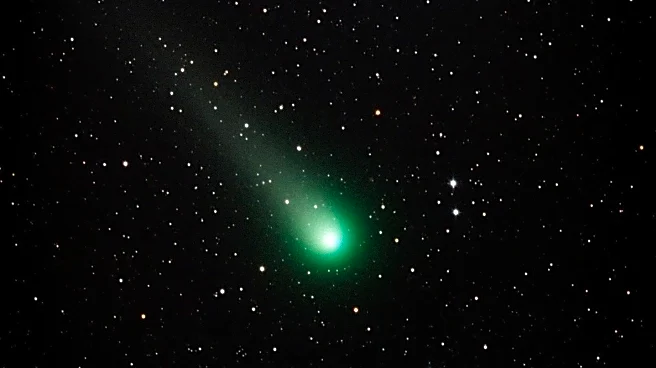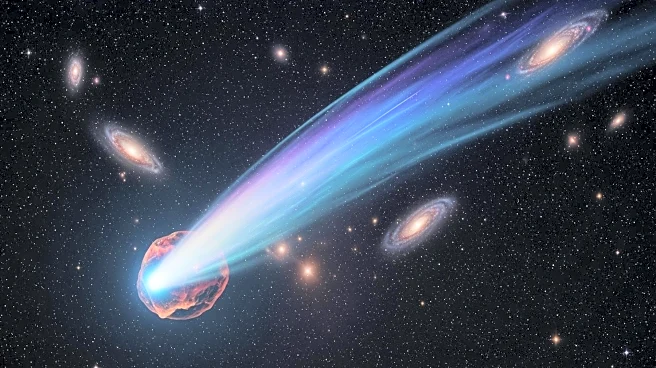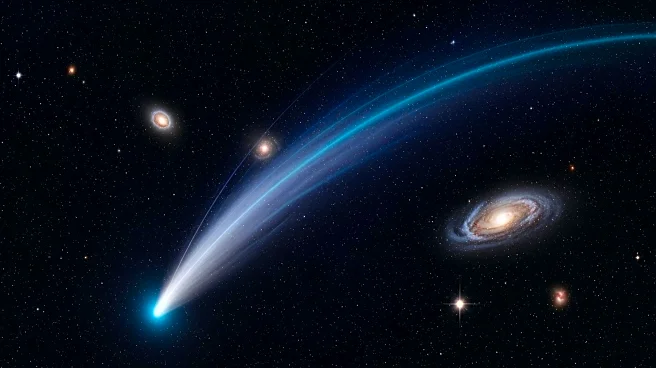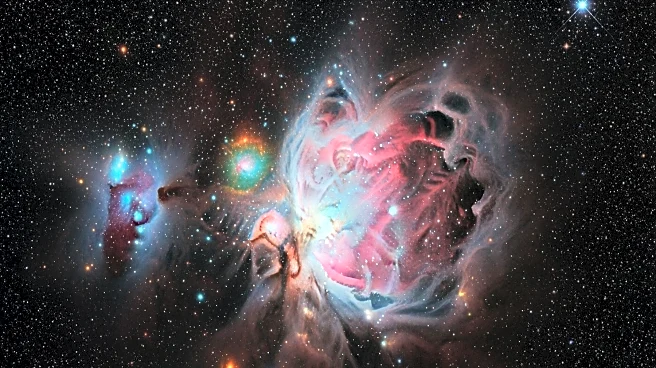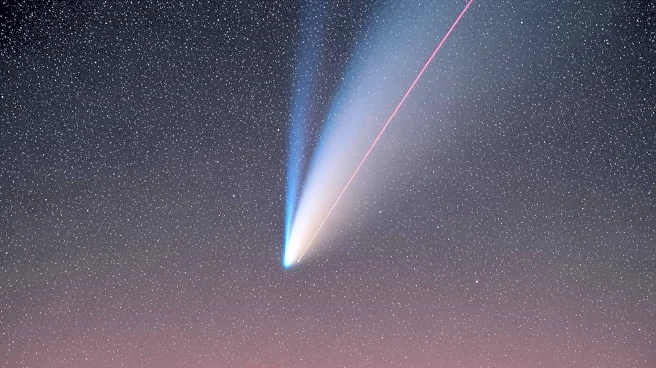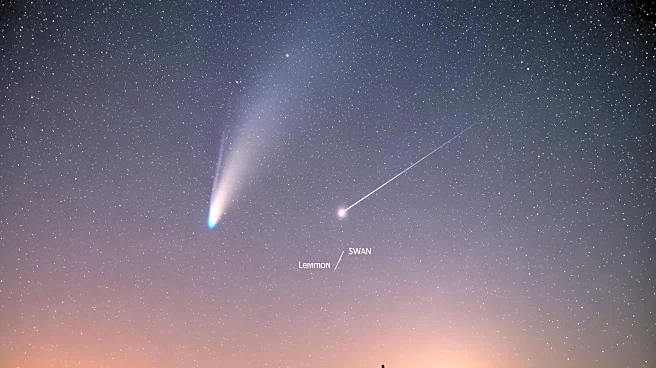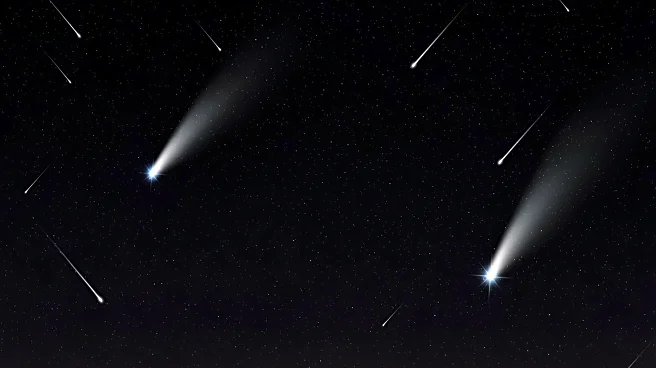What's Happening?
Comet Lemmon (C/2025 A6), discovered in January 2025, is making its closest approach to Earth on October 21, 2025. The comet, with a nucleus believed to be a few miles in diameter, may be visible to the
naked eye under ideal conditions. Robert Massey from the Royal Astronomical Society suggests using binoculars for better visibility, as the comet appears as a bright, fuzzy object in the sky. Comet Lemmon will be closest to the sun on November 4, offering further opportunities for observation. This event coincides with the peak of the Orionids meteor shower, providing additional celestial phenomena for stargazers.
Why It's Important?
The appearance of Comet Lemmon is significant due to its rarity, as it will not return for another 1,300 years. This offers a unique opportunity for astronomers and the public to observe and study a comet that is visible with minimal equipment. The event may increase interest in astronomy and space science, encouraging educational initiatives and public engagement. It also highlights the importance of clear skies and minimal light pollution for astronomical observations, emphasizing the need for preserving dark sky areas.
What's Next?
As Comet Lemmon approaches the sun, it may become more visible, providing further opportunities for observation. Stargazers are encouraged to look for the comet after sunset, using binoculars to enhance visibility. The event may lead to increased public interest in astronomy, potentially influencing educational programs and outreach efforts. The concurrent Orionids meteor shower offers additional viewing opportunities, enhancing the overall stargazing experience.
Beyond the Headlines
The event highlights the role of amateur astronomers in discovering and tracking celestial objects, contributing to scientific knowledge. It also underscores the importance of preserving dark sky areas for astronomical research and public enjoyment. The visibility of Comet Lemmon may inspire discussions on space exploration and the need for continued investment in astronomical research and technology.
